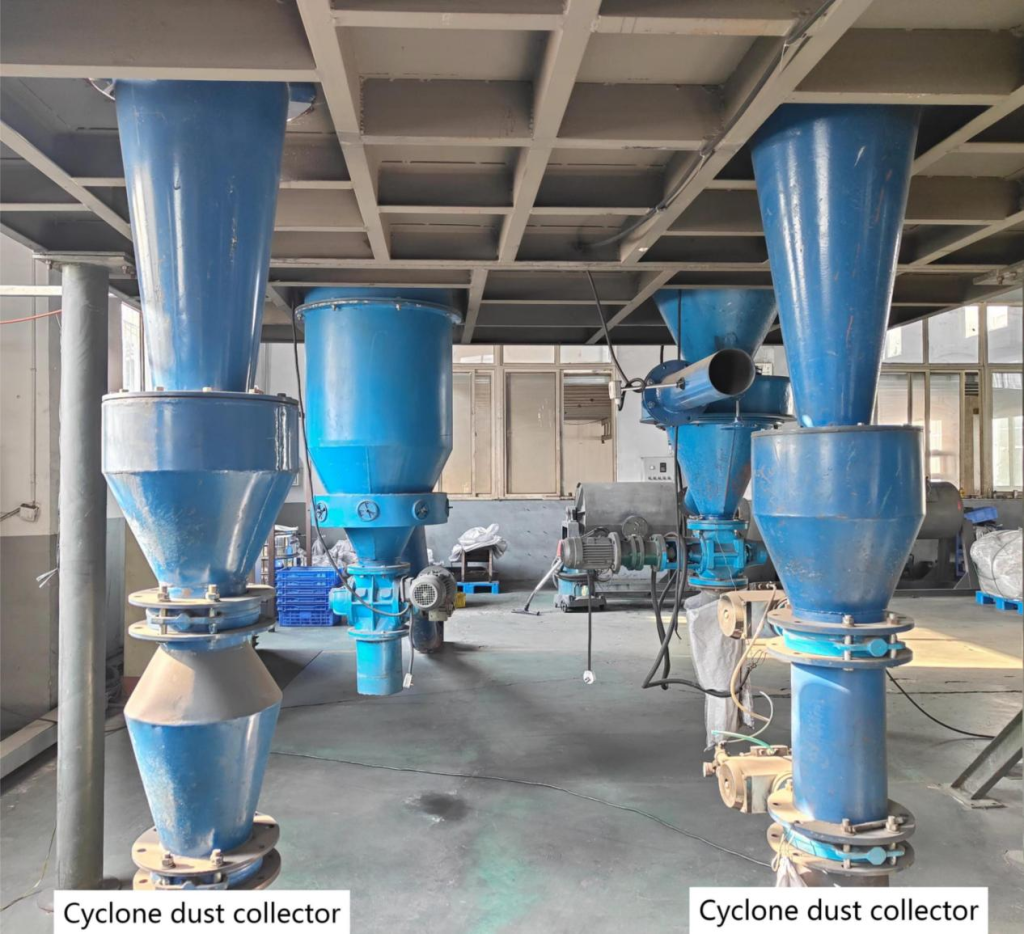pengenalan
Rawatan gas sisa ialah teknologi perlindungan alam sekitar yang digunakan secara meluas, ia digunakan untuk merawat gas buangan yang dihasilkan semasa pengeluaran perindustrian, dan menjadikan udara tercemar memenuhi piawaian pelepasan. Penyingkiran habuk adalah bahagian penting dalam rawatan gas buangan. Peralatan terasnya ialah siklon pengumpul habuk. Dengan menganalisis reka bentuk pengumpul habuk siklon, kami boleh mendapatkan formula yang sesuai untuk keadaan kerja yang berbeza, dan ia akan membantu untuk operasi projek praktikal. Faktor reka bentuk pengumpul habuk siklon

① Halaju gas
Pergerakan gas dalam sistem habuk terutamanya dicapai oleh halaju daripada aliran udara. Halaju gas secara beransur-ansur meningkat sepanjang arah tangen silinder, dan mencapai nilai maksimum apabila aliran udara mencapai bahagian atas kon. Untuk zarah dengan saiz melebihi 10mm, halaju gas boleh mencapai 35m/s; Untuk zarah dengan saiz kurang daripada 10mm, halaju gas adalah kira-kira 25m/s. 25m/s-35m/s ialah julat kecekapan maksimum yang diterima pakai oleh ramai pereka semasa mereka bentuk pengumpul habuk.
② Tekanan angin
Jumlah tekanan sistem habuk terutamanya terdiri daripada tekanan statik salur masuk udara, tekanan dinamik port ekzos dan rintangan. Rintangan ditentukan oleh bentuk dan kekasaran silinder. Pada suhu tertentu, tekanan mutlak P gas adalah berkadar songsang dengan aliran isipadu q, iaitu, P1/q1=k1, di sini k1 ialah pekali berkadar. Oleh kerana tekanan statik salur masuk udara boleh mengatasi sebahagian rintangan, jumlah tekanan pengumpul habuk emparan adalah lebih rendah daripada jenis aliran paksi.
③ Rintangan haus
Rintangan haus pengumpul habuk siklon secara langsung menjejaskan hayat perkhidmatan peralatan. Secara umumnya, semakin besar zarah, semakin besar ketumpatan, dan semakin melekit permukaan bahan, semakin besar rintangan haus. Oleh itu, apabila mereka bentuk pengumpul habuk siklon, adalah perlu untuk mempertimbangkan sifat fizikal habuk dan sifat gas sarat habuk.
④ Saiz zarah
Saiz zarah adalah salah satu parameter ciri asas untuk zarah. Mengambil zarah pepejal di udara sebagai contoh, saiz zarah merujuk kepada nisbah isipadu zarah pepejal dalam julat saiz zarah tertentu kepada isipadu keseluruhan zarah saiz zarah tersebut. Saiz zarah pepejal bukan sahaja mempengaruhi luas permukaan khusus penjerap, tetapi juga mempengaruhi proses penjerapan dan pemangkin. Oleh itu, taburan saiz zarah habuk perlu dipertimbangkan semasa mereka bentuk pengumpul habuk siklon.
Ringkasan formula reka bentuk untuk pengumpul habuk siklon
1. Kadar penapisan: G = 200 ~ 800L / min
2. Kadar aliran gas: Q1 = (38 – P1 / K1) × V1
3. Beban gas: P2 = (200-600 Pa)
4. Kecekapan pemisahan: e = 95% ~ 99%
5. Kecekapan pengumpulan habuk: φ = 100% ~ 98%
6. Penurunan tekanan: △p = 0.396 KPa ~ 0.684 KPa
7. Kehilangan tekanan yang dibenarkan: △p<0.296KPa
Dalam aplikasi praktikal, pengumpul habuk siklon biasanya digabungkan dengan kilang atau pengelas untuk mengendalikan dan mengumpul habuk yang dihasilkan dengan berkesan semasa mengisar atau mengelaskan. Qingdao Epic Powder Machinery Co., Ltd. ialah pengilang profesional peralatan pemprosesan serbuk. Qingdao Epic mempunyai pengalaman yang kaya dalam pengeluaran pelbagai jenis pulverizers, pengelas dan pengumpul habuk. Produk ini popular di kalangan pelanggan dalam dan luar negara.
Jika anda mempunyai sebarang keperluan atau pertanyaan berkaitan, sila hubungi kakitangan dari Qingdao Epic, mereka sentiasa bersedia untuk anda.

